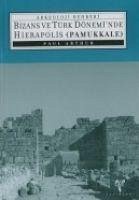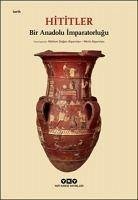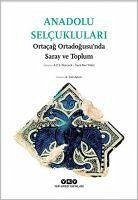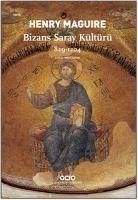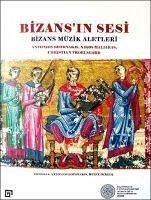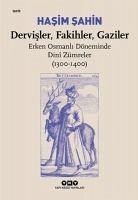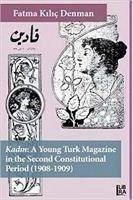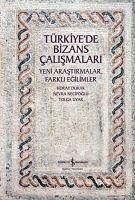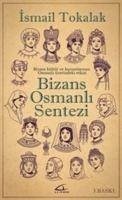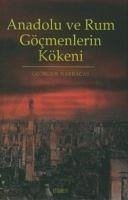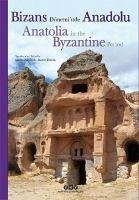
Bizans Döneminde Anadolu - Anatolia in the Byzantine Period
Versandkostenfrei!
Versandfertig in über 4 Wochen
30,99 €
inkl. MwSt.

PAYBACK Punkte
15 °P sammeln!
Imparator I. Theodosiusun 395 yilinda ölümünden sonra, Mans Denizi kiyilarindan Iran sinirina kadar uzanan genis Roma topraklari bati ve dogu olarak ikiye ayrilir. Her ne kadar imparatorlugun bati parcasi 5. yüzyilin ikinci yarisinda tarihe karissa da, Roma Imparatorlugu varligini dogudaki topraklarinda 1453 yilina kadar sürdürür. Baskenti Romadan Byzantion kentine yeni adiyla Konstantinopolise tasinan, zaman icerisinde Hiristiyanlasan bu imparatorluk icin Bizans adi, ilk kez 16. Yüzyilda Alman hümanist ve filolog Hieronymus Wolf tarafindan kullanilmis, 19. yüzyil ve sonrasinda bu te...
Imparator I. Theodosiusun 395 yilinda ölümünden sonra, Mans Denizi kiyilarindan Iran sinirina kadar uzanan genis Roma topraklari bati ve dogu olarak ikiye ayrilir. Her ne kadar imparatorlugun bati parcasi 5. yüzyilin ikinci yarisinda tarihe karissa da, Roma Imparatorlugu varligini dogudaki topraklarinda 1453 yilina kadar sürdürür. Baskenti Romadan Byzantion kentine yeni adiyla Konstantinopolise tasinan, zaman icerisinde Hiristiyanlasan bu imparatorluk icin Bizans adi, ilk kez 16. Yüzyilda Alman hümanist ve filolog Hieronymus Wolf tarafindan kullanilmis, 19. yüzyil ve sonrasinda bu terim yayginlasmistir. Ancak, bu kitapta bahsedilen insanlar kendilerini hep Romali, devletlerini de Roma Imparatorlugu olarak adlandirmis; komsulari da onlari Romalilar olarak bilmistir. Yaklasik 11 yüzyil boyunca varligini sürdüren Bizans Imparatorlugu, Anadoluda en uzun süre hüküm süren devletlerden biri olmustur. Agirlikli olarak Yunanca konusulan ve Hiristiyan olan Bizans dünyasinin cografi, beser ve ekonomik besigi Anadoludur. 14. yüzyil itibariyla Anadolunun kaybedilmesi, kisa sürede imparatorlugun sonunu getirmistir. 13. yüzyilin ortasinda Imparator II. Theodoros Laskarisin, mektuplarindan birinde Anadoluya Kutsal diyar, anam, Anadolu diye seslenmesi, bu topraklarin imparatorluk icin ne denli yasamsal oldugunu göstermektedir. Kitabin amaci, konusunda uzman yerli ve yabanci Bizantologlarin yazdigi 32 makale araciligiyla hem Bizans kültürünün hem daha özelinde Bizans Anadolusunun bir sunumunu yapmaktir. Siyasi, bürokratik, askeri, iktisadi ve dini hayat hakkindaki makaleler, devlet aygiti ve toplumsal yapi üzerine egilirken; edebiyat, saglik, sanat ve maddi izler temali makaleler, gündelik hayatla ilgili degerli bilgiler sunmaktadir. Kitabin son bölümünde okuyucu, Bizans Anadolusunun farkli bölgelerine odaklanan makaleler üzerinden tarihsel bir yolculuga davet edilmektedir. After the death of Emperor Theodosius I in 395, the vast Roman lands stretching from the shores of the English Channel to the borders of Iran were divided into two realms, western and eastern. Although the western part of the empire faded away in the second half of the 5th century, the Roman Empire continued to exist in its eastern territories until 1453. The name Byzantine was used for the first time by the German humanist and philologist Hieronymus Wolf in the 16th century for this empire, whose capital was moved from Rome to the city of Byzantion with its new name, Constantinople and became Christian over time. This term became widespread in the 19th century and later. However, the people that this book is about have always called themselves Roman and their state the Roman Empire, while their neighbors also knew them as Romans. The Byzantine Empire that ruled for about 11 centuries is one of the states whose reign lasted the longest in Anatolia. Anatolia was the geographical, demographic, and economic cradle of this predominantly Greek-speaking Christian population and its culture. The loss of Anatolia as of the 14th century led to the end of the empire in a short time. The cry of Emperor Theodore II Laskaris - Holy land, my mother, Anatolia - in one of his letters from the mid-13th century shows how vital these lands were for the empire. This book aims to present both Byzantine culture and, more specifically, Byzantine Anatolia, through 32 articles by Turkish and foreign Byzantologists, who are experts in their respective fields. While the articles on political, bureaucratic, military, economic and religious life focus on the state apparatus and social structure, articles on literature, health, art, and material culture remains provide valuable information about daily life. In the articles that constitute the last part of the book, the reader is invited to a historical journey through different geographical regions of Byzantine Anatolia.



